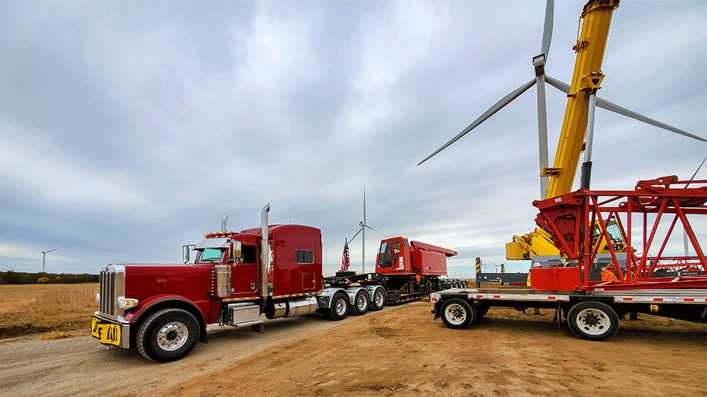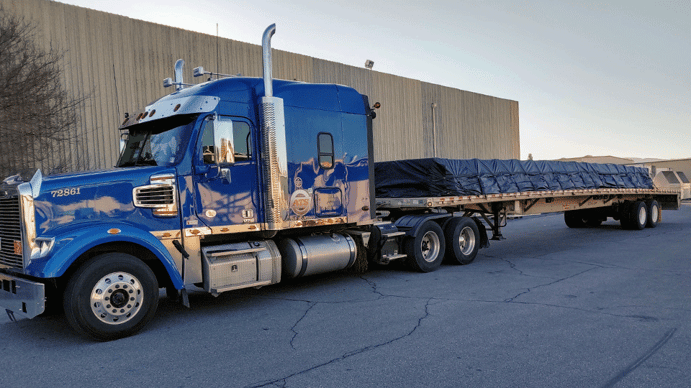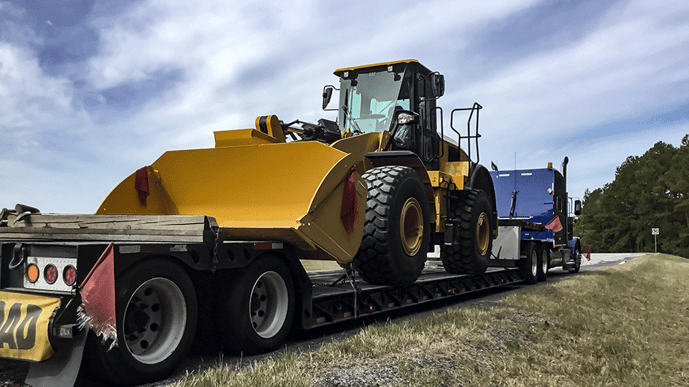Transportation is intimately intertwined with your business and paying to secure service is a constant reality you face.
Let’s call it like it is, though: your transportation costs are purely an expense. This is just the truth.
Scheduling inbound trucks and sending products outbound is how your supply chain functions.
But that doesn’t mean you want to pay more than you need to.
Your business counts on you to manage the dollars allocated to logistics each period. That said, this can sometimes be easier said than done — especially in recent history where spot rates rise and fall sporadically, taking your budgeted dollars along for the ride.
With so much up in the air, it can be difficult to predict where everything will land when the time comes to, once again, secure coverage for a shipment.
It’s true, many of the factors that impact spot rates — your origin and destination locations, current fuel prices, weather-related considerations, etc. — are out of your control.
The depth and breadth of load-specific information you relay to your transportation company, however, is well within it. And, getting accurate spot quotes upfront — quotes that are calculated to execute each shipment — is crucial to ensuring service and budgeting appropriately.
As an industry leader in the transportation space, here at Anderson Trucking Service (ATS), we’ve been supplying spot rates to companies, across industries, since 1955.
Time after time, these eight pieces of information — when provided by the shipper — have helped us formulate accurate and effective freight quotes:
- Exact pickup and delivery location details
- Cargo dimensions and specifications
- Loading/unloading capabilities and details
- Whether appointments are required
- Your cargo value (if over $100,000)
- Special securement instructions and requirements
- Whether driver assist or other accessorials will be needed
- Recommended trailer type(s)
Giving your provider the information outlined below will help them ensure your rate is calculated correctly the first time. Failing to do so could come at the expense of your customer relationships as deadlines are missed due to service failures on your transportation provider’s behalf.
1. Exact Pickup and Delivery Location Details
Pricing a shipment accurately usually starts with understanding and analyzing its origin and destination locations. Supply and demand (key factors in dictating the cost of transportation services) can vary greatly between areas.
For this reason, it’s important to relay origin and destination details to your transportation providers. Although there’s no such thing as providing too much information, the most crucial details to include are:
- City, state and zip code of origin location (include street address if possible)
- City, state and zip code of destination location (include street address if possible)
With these details, your transportation company can measure the cost of shipping freight into your destination and out of your origin (based on current market conditions within them) and calculate your freight rate accordingly.

2. Cargo Dimensions and Specifications
Whether your cargo is a single 48 by 48-foot pallet, an oversized piece of heavy construction equipment or a full truckload of raw materials, you’ll want to be as descriptive as possible when sourcing quotes to move it.
The more your transportation provider knows about your freight, the easier it will be for them to price its transport accurately. And, as the party that knows your cargo best, it’s up to you to provide all pertinent dimensions and details.
Here is a list of important specifications that you should make sure to include:
- Overall cargo dimensions
- Overall freight height
- Total freight length
- Total freight width
- Total pallet count and size (where applicable)
- Overall load weight
- Detailed commodity description with pictures when possible
- Additional cargo specifications (hazmat, liquids, foods, etc.)
The more specific you can be about your freight, the easier it will be for your transportation company to give you accurate pricing, calculated to get the job done.
3. Loading/Unloading Capabilities and Details
Your company’s loading and offloading capabilities directly impact your transportation provider’s decision-making processes. With so many types of trailers and equipment in the transportation world — each specifically designed to move certain cargo — it can be difficult to pinpoint the best fit for a load.
The loading procedures at your freight’s origin and the unloading capabilities at its endpoint help transportation companies narrow down your options and price your shipment correctly.
For example, if you have self-propelled machinery to move, your provider's plan — and by extension, the rate you receive — will change.
In this scenario, your carrier may need to send a step-deck trailer with ramps to your door. The addition of a ramp — which is a specialized piece of equipment — will affect your pricing, but is also necessary for loading.
Had your transportation company originally priced your load under the assumption that your cargo could be crane loaded on-site, it’s likely that this rate would increase significantly upon this realization as they scramble to find and provide the right solution.
 As such, you’ll want to make sure to communicate your business’ — and your consignee’s — loading/offloading capabilities.
As such, you’ll want to make sure to communicate your business’ — and your consignee’s — loading/offloading capabilities.
Helpful information to include:
- The loading/offloading equipment (cranes, forklifts, etc.) available at either end
- Whether there will be a loading dock at either end
- Whether sideloading is an option
4. Whether Appointments Are Required
Pickup and delivery appointments occurring at either end of a shipment must be considered when pricing its transport. For transportation companies, meeting appointment times can be difficult without enough notice, as carriers seek to book their trucks out days in advance.
That said, with proper lead time notice, even the strictest pickup/delivery windows can be met. So, if you will need a truck at your facility between 8-10 a.m. next Tuesday for a pickup, this will need to be specified. If your load must deliver on Wednesday at 1 p.m., tell your transportation provider as much.
With this information, your provider can formulate your freight rate correctly and ensure your service. Without it, you may receive an ill-formed rate.
5. Your Cargo Value (If Over $100,000)
Though there is no legal minimum cargo coverage, an industry practice of maintaining $100,000 is the norm among today’s carriers. For this reason, any time your freight is valued in excess of $100,000, additional considerations will need to be made.
Depending on your actual declared cargo value, your provider may need to change your rate in order to arrange a more experienced driver, administer greater oversight or secure heightened cargo insurance coverage.
So they can price your freight correctly, make sure to inform transportation companies when your cargo value exceeds $100,000.
Related: Why Does High-Value Freight Cost More to Ship? [and How to Save]
6. Special Securement Instructions
When moving your freight for the first time, your provider will probably have little understanding of its more specific securement requirements and sensitive points — areas with the potential to damage during securement.
These understandings are important for quoting your load properly, though.

If protecting your freight throughout securement and transport will require special equipment such as corner protectors, beveled dunnage, extra straps, extra chains and/or strap protectors, these are important specifications to communicate.
Individually, truck drivers have finite securement equipment at their disposal. As a result, your freight rates will change should you need extra, more specialized equipment — requiring your transportation provider to arrange an adequate solution.
7. Whether Driver Assist And/Or Other Accessorials Will Be Needed
The final price you pay for your freight won’t accurately reflect the number you’re quoted if accessorial charges are incurred during the course of your shipment.
Some charges, like detention and layover — stemming from a lack of efficiency and coordination between parties — can’t be predicted upfront. However, other things can.
Does your freight need to be tarped?
Will your driver need to help with loading or unloading?
Are there multiple stops on this shipment?
If your answer to any of these questions is yes, make sure to communicate these requirements to your provider. Knowing these things, transportation companies can price your shipment correctly and avoid tacking on extra dollars (which you were not expecting) on the back end.
Related: Accessorial Charges 101: Defining Trucking Industry Surcharges
8. Recommended Trailer Type(s)
A final piece of information it never hurts to provide is a recommended trailer type, or two. This suggestion should, of course, be based on the trailers you’ve used to haul cargo in the past.
And, since you’re most familiar with your processes, facilities and freight, taking your recommendation into account — coupled with their expertise and other information they’ve collected from you — will help your provider formulate an effective plan of action for moving your shipment.
Whether you’ve loaded flatbeds and step-decks or only dry vans in the past, don’t be afraid to share this information with your provider — especially if they’ve never worked with you before.

How Long Does a Spot Quote Remain Accurate?
Giving your providers (freight brokers, carriers, etc.) these nine pieces of information when fielding freight quotes, will help you in various ways in the future. Over time you’ll experience fewer service failures and encounter unexpected rate hikes far less frequently than you otherwise would.
Additionally, as you and your providers develop more rapport and get more comfortable with each other’s processes the accuracy of your rates will only heighten.
That said, it is also important to understand how long your spot rates are good for.
Provided you’ve given your partners all of the necessary information, how long should you expect that rate to hold?
Will you need to get an adjusted price if your shipping date changes?
These are important questions to answer as knowing the time period during which your rate is effective and accurate helps you plan out shipments and budget your dollars.
There is, however, some depth to this topic. Check out this article about how long spot freight rates are good for, which outlines everything you should keep in mind.
Finally, if you have any questions about how ATS can help you get your next load moved or the unique steps we take to ensure each spot rate we provide is calculated correctly, contact us today. We have a transportation professional standing by to help you in any way you need.




